Students Celebrate Espresso Your Faith Week
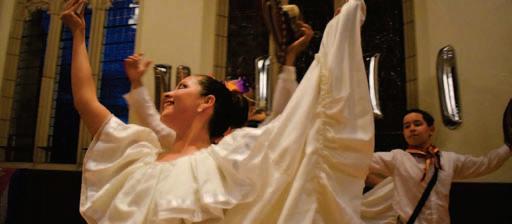 A MY P ALMER Asst. News Editor F IONA F LANAGAN For The
A MY P ALMER Asst. News Editor F IONA F LANAGAN For The

Heights
The Boston College community tied hundreds of maroon and gold ribbons filled with their prayers to the fences surrounding Bapst Library this past week.

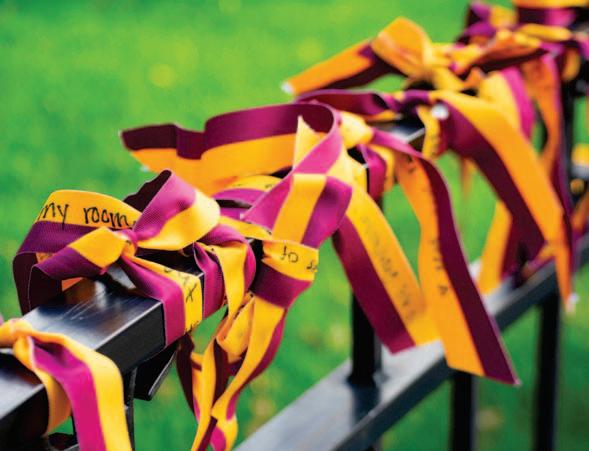

“I love the spirit of the ribbons because it’s an opportunity for conversation,” Karen Kiefer, director of the BC Church in the 21st Century Center (C21), said. “Those [ribbons] are all intentions that represent and reflect the beauty and power and love of our Boston College community.”
The Prayer Ribbon Project is just one part of this year’s Espresso Your Faith Week, an annual celebration of faith sponsored by C21 and Campus Ministry.
The week features various events including an Agape Latte storytelling event, coffee socials, live music, prayers, masses, and much more.
Kiefer noted openness among community members in sharing stories and engaging with Espresso Your Faith Week.

“This year there has been such a robust spirit that is igniting the campus and students seem so open,” Kiefer said.
M AGAZINE
Period care brand named “Viv for your V” may seem bold or in your face—but according to founder Katie Diasti, BC ’19, that’s exactly how it should be. Viv for your V provides Earth friendly and toxin-free period products direct-to-consumer, but its mission goes beyond just this. Diasti and her team, who understand the struggles of menstruating, are working to push the envelope on conversations regarding period care.
“We actually wanted to personify a brand, and so Viv is who we think of as an older sister, or this like, badass person or a mentor,” Diasti said. “And then the bonus of ‘for your V’ goes along with the boldness of being in your face and like talking about these
things up front and wanting more brands to do that.”

As a marketing major with a managing for social impact minor, Diasti became highly interested in mission-driven brands, she said. During her sophomore year, when the 2016 presidential election was occurring, Diasti witnessed more and more brands speak out politically or become active for causes outside of their brand, which caused her to decide that she either wanted to work at a mission-driven brand after graduating or found one herself.
During her time at Boston College, she also cultivated a deep passion for understanding the struggles women go through, which eventually moved her into the beauty and hygiene space.
NEWS Students
A3 ARTS Train
A6 Monday, September 27, 2021 www.bcheights.com Chestnut Hill, MA S PORTS
gathered to celebrate Hispanic Heritage Month with food and dance.
headlined 2021 Pops on the Heights accompanied by the University Chorale.
INSIDE THIS ISSUE ARTS.............. OPINIONS...... SPORTS....... NEWS........... METRO.......... MAGAZINE... A6 A7 A9 A2 A4 A5 Eagles Shut Mizzou Down, 41-34 INDEX Vol. CIII, No. 14 ©
The
www.bcheights.com Estalished
2021,
Heights, Inc.
1919
After Missouri head coach Eli Drinkwitz’s comments caused a stir, BC clinched an overtime win, remaining undefeated.
WANG / HEIGHTS STAFF See A9 See A9
MOLLY DENNING / HEIGHTS STAFF
LEO
ISABELLA THORPE Heights Staff
See A5
“Viv for your V” Provides Period Care
MOLLY DENNING / HEIGHTS STAFF
Diasti’s
MOLLY DENNING / HEIGHTS STAFF
Students and faculty of BC enjoyed an in-person Espresso Your Faith Week.
2 3
Learning a Latte Through Espresso Your Faith Week
from A1
After the isolation caused by COVID-19-related cancellations and social distancing, Kiefer said there has been a noticeable change in attitude as students are taking advantage of the open campus.
One way students have been taking advantage is by stopping at event tables across campus and participating in activities like making their own rosaries.
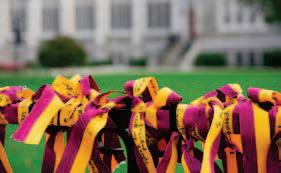
“I cannot keep rosary beads in stock,” Kiefer said. “I ordered hundreds of them, and I’m down to almost my last batch.”
Kiefer said she wants to encourage students to keep opening up to new opportunities.
“Open yourself up,” she said. “Open yourself up to meeting new people. Open yourself up to the possibility of God working in your every day. Be intentional about how you live here.”
Rev. Thomas Stegman, S.J., dean of the School of Theology and Ministry, spoke at Agape Latte on Tuesday night about opening up to God’s call. God’s call, Stegman said, can come to people as a gut feeling.
While he was a math major at University of Nebraska–Lincoln, for example, Stegman said he found himself attending Mass regularly and started thinking about joining the seminary.
Stegman said he drew a line down the middle of a piece of paper. On the left side he listed reasons to stay at Lincoln, which he said were many, and on the right side he put his reason
to leave.
“I put down one reason,” Stegman said. “Two words: gut feeling.”
Against the advice of his loved ones, Stegman left Lincoln and was sent to a seminary in Philadelphia. He never looked back.
After joining the Jesuits, Stegman said he began to experience dizziness and fainting spells, so he was sent home and underwent surgery.
“I remember looking in the mirror everyday wondering … what’s my life going to be?” Stegman said. “But through this all … I had so many people praying for me and I had a real sense that this was going to be okay.
God led me this far and I didn’t think he led me this far just to have it end this way.”
Two years ago Stegman’s symptoms resurfaced and he was subsequently diagnosed with a serious health condi-

“I won’t say I’m happy about this, but I’ve felt strangely prepared for this,” Stegman said.
In an interview with The Heights, Stegman said he hopes students will take away two key lessons from his
desire and ability to listen to the true self and to God’s call to serve their life’s vocation,” Stegman said. “Secondly, [that] our faith gives us resources of hope and strength to get through tough times.”
ing to this speech especially helps you listen to that gut feeling and follow your dreams.”
Bunt said Stegman’s talk underscored the importance of the Jesuit value of being men and women for others.
“I think my biggest takeaway is to love and be kind to others and always be men and women for others,” Bunt said.
Kiefer said it is a blessing to share the gifts of the Jesuit Catholic university with the community through Espresso Your Faith Week.
“I think [the week is] important because it awakens our spirit early in the academic year, so that we can think and reflect on where God is working in our life,” Kiefer said.
Whatever your faith is, Kiefer said, everyone was invited to celebrate the week and meet in conversation.
Espresso Your Faith Week is a great opportunity for the community to engage with the Catholic faith and God’s call, Stegman said.
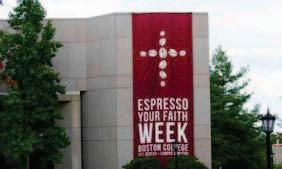
“I think it’s a wonderful outreach to students to reflect upon the riches of our Catholic faith and to have an opportunity to hear stories and deepen their own sense of how we might walk forward, taking our faith very seriously, and be the people God’s calling us to be,” he said.
Caroline Bunt, CSON ’22, said this was her first time attending Agape Latte.
“I hope that all students feel embraced by this week, that it’s not just Catholic students, I mean that’s not what our faith is about,” Kiefer said. “It’s leading with love, and then really sharing that love, so that other people can realize the light that lives within them.”
Ultimately, Kiefer said she hopes that the spirit of last week—giving in service to others—opens students’ hearts and helps them find the courage to jump at opportunities. She also hopes that students receive a particular gut feeling—God’s love.
tion. When asked if he felt angry with God, Stegman said he did not.
talk.
“One is that people grow in their
“Talking about having a purpose or having this gut feeling, especially as a senior, starting to think about careers can be a little scary,” Bunt said. “Com-
“Hopefully, in that spirit of giving during this week we receive the love of God, and we feel that in our gut,” Kiefer said.
BC Students Return To in-Person Social Events
BY JULIA LANDWEHR Heights Staff FIONA FLANAGAN For the Heights
Chloe Frabotta is having a pretty typical sophomore year. She lives on CoRo and has a busy schedule full of in-person activities and events. But in comparison to her first year at Boston College, college life feels anything but normal.
“I feel like a second-year freshman, because, like [the current freshmen] are experiencing [BC] for the first time, but so are all the sophomores,” Frabotta, MCAS ’24, said.
Last year, Frabotta was a freshman living on Newton Campus and attending classes mostly online. While she enjoyed Newton’s tight-knit community, she loves living on Main Campus now and has been surprised by how many people she sees.
“[There’s] definitely so many people on campus, like, I didn’t realize how many people go to this school,” Frabotta said. “I also see people [I know], like, I’ll walk somewhere and I’ll see five people, where last year I felt like I was a little bit more anonymous—this year, anonymity is gone. You have to be prepared to see multiple people when you leave your room.”
After a year of mostly virtual class-

es and club meetings, traditions put on hold, and capacity restrictions that kept students isolated, BC—which is over 99 percent fully vaccinated—is embracing in-person events once again.
The University’s mask mandate and capacity restrictions during the 2020–21 school year were intended to keep students, faculty, and staff safe during the COVID-19 pandemic. But students said they felt that the restrictions also left them with few opportunities to connect with their friends or enjoy any sort of social life.
SJ Naim, MCAS ’23, said she found the administration’s capacity restrictions fairly oppressive, but understood that she needed to follow them to keep the larger community safe. Living on CoRo last year, Naim’s in-person social interactions were largely limited to passing moments in her dorm.
“My roommate and I are best friends, and all my other really, really close friends were on my floor, so I would like run into them in the bathrooms, in the hallways,” Naim said. “But had that not been the case, I would have had a really difficult year.”
As a freshman, Frabotta took advantage of online club meetings, where she said she met some of her good friends. She said having club meetings over Zoom actually encouraged her to join more clubs because she didn’t
have a lot else to do, but she’s looking forward to in-person events this year.
Frabotta is involved in the Boston College Musical Theatre Wing, Sea Eagles of Boston College, Women in Stem, and she plays intramural softball. She said she played softball for about 10 or 12 years and loves that she has the opportunity to be a part of a team again.
“[Intramural softball] is very fun!” Frabotta said. “Last year [we] had to wear masks, but this year I think seeing people’s full face when they’re playing sports makes it 10 times funner.”
Naim also attended an in-person meeting for Sea Eagles of Boston College her first week back and is considering getting involved again with other organizations she’d been a member of in the past.
Aside from club events, students are also enjoying taking part in classic BC traditions, some for the first time.
“I am looking forward to so much,” Frabotta said. “First of all, more football games. I’ve never been to a BC football game, but when I walked in, there were so many people. I was sitting right next to the band, the band was playing ‘good 4 u.’ [By] being in the football stadium, I really did feel like a BC student.”
Frabotta said she was also looking forward to hockey games, ALC
Showdow n, and, of course, Marathon Monday.
The Campus Activities Board (CAB) is also planning in-person events this year. One of the major annual events is Stokes Set, an annual concert on campus that took place on Sept. 18, which Molly Denning, MCAS ’24 and CAB assistant director for live entertainment and marketing, helped coordinate.
“Last year [CAB] had to really think outside of the box to get events that were fun and COVID safe off the ground,” Denning said in a written statement to The Heights . “But this year we can go straight to the fun classics and try out new ideas we couldn’t last year! Especially as a sophomore [who has] never seen CAB in full swing, it’s crazy all the in-person events we do between all the departments of CAB.”
Along w ith Stokes Set, Denning said that BC students can look forward to more in-person events as the semester goes on.
“CAB is fully back in business!” she said.
Though in-person events at BC are in full swing, some students are still a bit worried about coming into close contact with so many people, usually unmasked.
“There’s so much more going on [this year], which is amazing,” Naim
said. “However, there’s such a huge personal stress I feel with my social impact regarding COVID and wanting to make sure I have the right balance between personal responsibilities to my friends that I owe, and also [my] social responsibility and being safe about COVID in general. The vaccine helps a lot. It really takes a weight off my shoulders, but I am fully aware that it doesn’t 100 percent protect me from not getting COVID.”
Naim is living off campus this year and feels more confident hosting small gatherings with just her roommates and friends.
“There’s a lot more freedom socially and regarding COVID, because the [p eople] that come into my house, I know where they’ve been, I know who they’ve interacted with—they’re my roommates,” she said.
Even still, it’s all about walking the line between growing friendships at in-person events and keeping the BC community healthy, Naim said.
“There’s a lot of potential this year, especially with all the games coming back, and all of the activities like Stokes Set and stuff like that,” Naim said. “So, I’m very excited, but with that comes a little bit of wariness … I put on my mask for long classes, where I’m in close spaces in the library. [I’m] just trying to do my due diligence, and keep myself and others safe.”
NEWS A2 MONDAY, SEPTEMBER 27 , 2021 THE HEIGHTS
Beth Lew-Williams, an associate professor of history at Princeton University, will give a lecture on Wednesday at 7 p.m. on 19th century anti-Asian violence and analyze its implications on the present day. You can register for the virtual event here
Paddle down the mighty Charles River on Friday at 3 p.m. with CAB. Transportation to the meetup spot— the Charles River Canoe & Kayak Company— will not be provided and the event costs $7 plus fees. Tickets are available at Robsham.
Learn about the global effects of cancer at an event hosted by the Institute for the Liberal Arts in Lower on Saturday at 8:30 a.m. You can register for in-person attendance or virtual attendance.
1
This Week’s Top 3 Events
Espresso,
MOLLY DENNING / HEIGHTS STAFF
MOLLY DENNING / HEIGHTS STAFF
A banner announcing Espresso Your Faith Week hangs outside of O’Neill Library.
Red and yellow ribbons filled with prayers line the fence outside of Bapst Library.
Boston College Charity: Water Returns To in-Person Events
 BY ADITYA RAO For The Heights
BY ADITYA RAO For The Heights
After breaking its own record by raising more than $20,000 during the last academic year, BC charity: water is ready to get back in action, according to Co-President Keelin Rogers.
“We’re really excited to get back on campus with a lot of energy,” Rogers, CSOM ’22, said. “We’re going to make sure that people are aware of the water crisis and what charity: water does to help it out.”
The student organization is the Boston College chapter of the larger charity: water organization, founded by CEO Scott Harrison after he realized the severity of the world’s water crisis.
“There are over 700 million people in the world that don’t have access to clean water every day,” treasurer of BC’s chapter Josh Abel, CSOM ’23, said. “[Harrison] also knew that a lot of his friends at the time didn’t really trust charities. They didn’t want to give their money without knowing where it was going to, since it wasn’t trackable.”
To combat this, Harrison came up with the 100 percent model, where 100 percent of donations would go directly to water projects, made possible by private donors covering operating costs and overheads.
Also, charity: water lets donors track the effects of their contributions as they are used to fund wells and filtration infrastructure around the globe.
BC’s chapter of charity: water aims to spread awareness of the water crisis and gather donations through a vast array of events, according to Co-President Julia Dunn, MCAS ’22.
“We do a lot of tabling events in the Quad,” Dunn said. “We also do a lot around holidays, like a Halloween event and a Christmas sweater sale. We try to promote and raise awareness about [the water crisis] to hopefully get our own BC well built somewhere.”
The organization has experienced massive growth in recent years, Abel said. In addition to the incredible efforts of the charity: water team, Abel attributed this growth to required freshman reading in the Carroll School of Management.
“Freshmen in CSOM are required to read Thirst, which was Scott Harrison’s memoir about the founding of charity: water,” Abel said. “We’re now on the third year of freshmen who have read Thirst, so we’ve seen a ton of interest from those who read the book or had a friend tell them about it.”
Additionally, BC charity: water adapted remarkably well to the difficulty of organizing in-person events due

to COVID-19, Rogers said.
“Social media helped our growth a lot,” Rogers said. “It was huge last year so we used it to publicize events and raise awareness. We also did a lot of bingo boards where we would ask people to use Venmo for individual donations.”
The organization is excited to transition back to being inperson with its first event of the year on Sept. 29, according to Co-Vice President Connor Thomson, MCAS ’23.
“We’re doing Beach Day,” Thomson said. “We’re going to be at a table out on the Quad during the day, raising money and talking to people about the water crisis. It’s a great way for us to introduce ourselves to a lot of those walking between classes and get our new members integrated into the club for one of our first events.”
Dunn said that BC charity: water is excited to use this annual Beach Day to engage students and have a great start to their operations for the year.
“We’re really excited to get more people involved at our tabling events,” Dunn said. “Which is really awesome because it’s a good start off point for the year as we open our campaign and get people familiar with charity: water and what we do.”
UGBC Approves ’25 SA Representatives
BY SHRUTHI SRIRAM For The Heights
Rebecca Hamlin, associate professor of legal studies and political science at the University of Massachusetts Amherst and author of Crossing: How We Label and React to People on the Move, spoke about the dangers of using binary language to define migrants and refugees at an event on Sept. 21.
“The binary … elevates the suffering of some people above the suffering of others, basically deferring the most difficult ethical conversations that states could be having but choose not to have,” she said.
Hamlin spoke about her book in an event hosted by the Center for Human Rights and International Justice at the Boston College Law School. She started her talk by looking back to 2015, when a photo of Alan Kurdi, a toddler left face down, drowned on a Greek beach, went viral.
Hamlin said the media tried to differentiate between migrants and refugees when addressing the photo.
“There was this flurry of what I call explainer articles,” she said. “Every news outlet published an article that asked the question, what is the difference between a migrant and a refugee, and which one is coming across the Mediterranean Sea to Europe?”
Hamlin said such “explainer articles” push a binary narrative.
“It’s a way of seeing the world in binary terms where every single border crosser’s either a migrant or a refugee,” Hamlin said.
Binary narratives allow a way for people to neatly characterize who is and is not deserving of help, according to Hamlin.
“Binary logic is essentialist and borderless,” she said. “That there is this essential quality of refugee-ness that people either possess or don’t possess. That’s why these explainer articles are so satisfying. You’re just satisfied with the answer that the system is going to find the people who
are the neediest.”
The United Nations High Commissioner for Refugees (UNHCR) has played a massive role in upholding the binary, especially through its social media presence in the last few years, according to Hamlin. She explained why the UNHCR aims to uphold such narratives.
“It can help UNHCR stick out its mandate to assist one specific type of border crosser, that’s defining itself out of a much larger regime complex of migration governments,” Hamlin said.
The UNHCR, concerned over its donors in privileged middle class areas, Hamlin said, attempts to appeal to its demographic. According to her, the organization tries to accomplish this by separating refugees into a needier group.
“They want to reach the anxious middle and convince them not to be afraid of refugees,” Hamlin said. “UNHCR is very concerned about the populist term in donor states. They … reassure the majority of voters and donor states that refugees are not a threat because obligations to refugees do not extend to every border prospect.”
Hamlin said there are ethical ramifications of the UNHCR’s strategy.
“Such frames allow powerful states to sidestep the most difficult political discussions about the ethics of border control by suggesting that harsh measures are just, so long as they make rare exceptions for refugees,” Hamlin said.
Serena Parekh, a professor of philosophy at Northeastern University and the director of the politics, philosophy, and economics program there, agreed with Hamlin.
“I agree that the rigid distinction between preserving refugees and migrants as undeserving of even basic dignity and respect is untenable at best and morally repugnant at worst,” Parekh said.
BAIC Kicks Off Latinx, Hispanic Heritage Month
BY VICTOR STEFANESCU Asst. News Editor SAMUEL KING
For The Heights
Latinx and Hispanic cultures are not encompassed by food and dance alone, according to Rev. Alejandro Olayo-Méndez, S.J., an assistant professor in the Boston College School of Social Work.
“We love to dance,” Olayo-Méndez said at the 2021 Hispanic/Latinx Heritage Month Celebration. “We love food. … But is that all that we have? Is that all that we celebrate when we talk about heritage? Is that all that Latinx communities have to bring?”
The Thea Bowman AHANA and Intercultural Center (BAIC) filled the Gasson 100 banquet room with color and dance during the annual celebration Tuesday night.

During his keynote address, Olayo-Méndez discussed the need for his community to confront injustice and unify with other people in the world.
The celebration included a performance from Fuego del Corazon,
BC’s Latin dance team, alongside the off-campus dance group Bajucol Colombian Folklore Dance Company. Bajucol performed three traditional Colombian dances: the Bambuco, the Cumbia, and the Bachata.
After the performances, students packed the banquet room and lined the atrium as BAIC staff served Latin dishes like arroz con gandules, pollo guisado, plátanos maduros, and mini pastelitos rellenos de pollo.
Bianca Lopez, co-chair of the committee that organized the celebration and MCAS ’22, said she was delighted with the attendance.
“It feels amazing to just see the [amount] of people that came by to show support and also seeing so many people here,” Lopez said. “It’s unreal. It’s surreal.”
Lopez said students can learn about future BAIC events through the BAiC’s website and social media accounts.
During his speech, Olayo-Méndez called on the audience to consider three main ideas: the ability of the Hispanic and Latinx community to address the tension with its colonial past, to resist
injustice, and to be inclusive.
In the 1960s, the national celebration of Hispanic Heritage lasted only a week, not a month, Olayo-Méndez said.
“In 1968 it was only a week.” Olayo-Méndez said. “It was only in 1988 with President Ronald Reagan that we finally get 30 days of celebration of these cultures instituted. It starts [on] September 15 because many of the independence days for Latin American countries are around those days.”
There is tension in the celebration stemming from Spanish colonialism, Olayo-Méndez said.
“It starts with the Spanish,” Olayo-Méndez said. “Which if you want to know a little bit about history and understand the colonial roots of Latin America, you have to talk about and have those conversations about the role of Spain as a dominant country in Latin America.”
But Latinx and Hispanic people can resist this tension and confront it, according to Olayo-Méndez.
“We need to also be able to say these people that have paved the way for us
have been resilient and have resisted,” Olayo-Méndez said. “El resistencia no es un idea.”
Olayo-Méndez was in graduate school in Chicago in 2006 when protests for immigration reform occurred across the country, he said.
Attending those protests, Olayo-Méndez said he looked around and saw more than just Latin American flags.
“And I remember walking through the highline Chicago going downtown,” Olayo-Méndez said. “I think this, this is my people.”
This march for justice was a moment of unity, Olayo-Méndez said.
“We are here to establish it. We want to be seen. We march, saying over and over and over, ‘Si podemos, si se puede,’” Olayo-Méndez said, which translates to “Yes we can, yes we can.”
NEWS A3 MONDAY, SEPTEMBER 27, 2021 THE HEIGHTS
OLIVIA CHARBONNEAU / HEIGHTS EDITOR
VIKRUM SINGH / HEIGHTS EDITOR
Two performers at the BAIC’s Latinx/Hispanic Heritage Month opening event.
No Phones Allowed at New Dessert Bar in Cambridge
By Olivia Strong For The Heights
Stepping through the door of Zuzu’s Petals, customers are transported to a small cafe in Paris. The dim lighting mixed with Etta James’ voice
for a while.
Bobby MacLean and Alexandra Whisnant opened the new wine and dessert bar in Cambridge in July, deciding to break into the restaurant world together after running separate shops in Somerville. Whisnant owns
locally sourced grocery store.
Despite being MacLean and Whisnant’s first restaurant, even at 5:30 p.m., a relatively early time for dinner, the bar was filled. The restaurant has a relatively small, yet charming, eight-table interior, but this small scale could intimidate customers who are wary of COVID-19. To ameliorate the tight interior spacing, outdoor seating provides a space for patrons to dine in the open air.
One can hardly argue that this was a smart adjustment, as nearly every table was filled with someone enjoying wine, cheese, and dessert.
MacLean and Whisnant’s previous ventures certainly played a role in drawing customers in, which helped to counteract the difficulty that opening during a pandemic poses. One customer, Amanda, claimed that she came in specifically because of the owners.
corner immediately gives the space a quaint Parisian feel.
It is impossible to leave this restaurant without getting one of its cheese boards, with most tables opting for the restaurant’s two cheeses, jam, and half a baguette board. Upon ordering customers are allowed to choose from the restaurant’s wide variety of cheeses served with fresh jam.
The Grey Barn’s Bluebird and Cricket Creek Farm’s Maggie’s Round are two house favorite cheeses that offer a perfect balance of sharp and mild flavors to go with the sour taste of the cherry jam that it is paired with.
misu, chocolate mousse, almond torte, or crème brûlée. Each option can serve at least two people, but it is difficult to not want to try each.
“We got the crème brûlée and the chocolate mousse,” another patron, Lindsay, said. “Both were so good but my favorite was probably the crème brûlée.”
Lindsay’s friend, Molly, however, declared that the chocolate mousse was better.
“It looks like it would be ice cream but it is so rich and fluffy!” Molly said.
pouring out of the speakers creates an atmosphere that draws customers in, inviting them to sit down and stay
“I knew the owner’s other place, gâté comme des filles, so when I heard this was opening I had to come try it out,” Amanda said.
Upon entering the restaurant, a basket of fresh baguettes sitting in the
A strict no-phone policy is implemented to encourage conversation and protect the ambiance. The policy prevented any pictures of the food, but rest assured the food looks as picturesque as can be expected from a dessert and wine bar so meticulously planned.
After filling half your stomach with cheese, it is time to move on to dessert, where customers can choose from any of the restaurant’s four options of tira-
Watching as desserts are brought to each table makes saying no to dessert impossible. Customers that indulge will leave with no regrets.
For customers over 21, Zuzu’s Petals offers a wide variety of wine options ranging from $12 to $36 per glass. Under each food item on the menu, there is a suggested wine pairing, ensuring that you will get the most for your money.
With its combination of food, drinks, and atmosphere, there is no doubt that Zuzu’s Petals will become a staple of Cambridge.
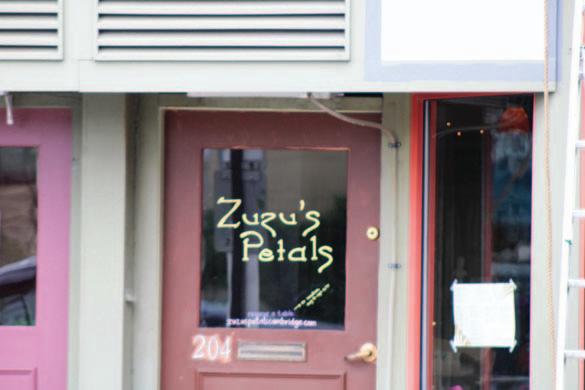
Artist Nancy Sch ö n Donates Sculpture to Newton
By Josie McNeill Asst. Metro Editor
With 13 petals representing each of the 13 villages in Newton, Nancy Schön’s sculpture of a sunflower for the 30th birthday of the Newton Free Library exemplifies her fondness for her hometown and her appreciation for the place that inspired her to pursue art.
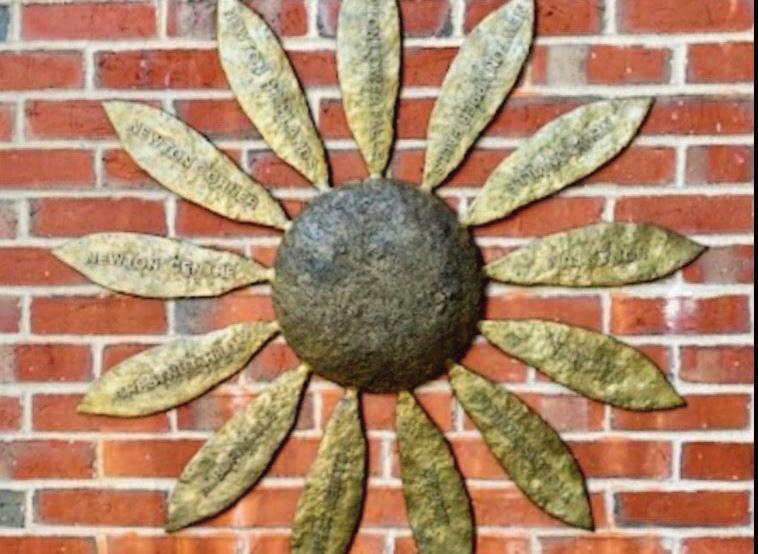
“I think somehow I’ve been sculpting all my life,” Schön said. “It’s something that I really love to do and for some reason, I did it. My hands like to work in the clay and that’s what happened.”
The donated sculpture is displayed at the front of the library building to the left of the book drop. Schön does site-specific sculptures, meaning she chooses the design for the sculpture based on where it is being placed.
“I know that Newton is the Garden City, and being the Garden City, I
wanted to do something that would speak to a garden, which would be a flower,” Schön said.
The sculpture is a true representation of Newton, with each petal having the name of one of the 13 villages on it to show the interconnectedness of the town, Schön said.
Schön grew up in Newton and became interested in pursuing art at age 10 after reading a book about Michelangelo in the library. She fell in love with his artwork, and now she gets to have people fall in love with her own artwork at the same place.
“The library is a central place,” Schön said. “I’ve always loved the library. I have three sculptures at the library … Winnie the Pooh and Piglet and Eeyore, at the Newton Library in the Children’s patio.”
Many of Schön’s sculptures are based on children’s literature. “The Owl and the Pussy-Cat,” which was recently installed in Dorchester,
according to Schön, is based on the poem with the same name. Her famous “Make Way for Ducklings” statue in the Boston Public Garden is also based on a children’s book of the same title.
The “Make Way for Ducklings” statue is about “promises kept and family values,” according to Schön’s website.
In addition to her 10 sculptures in the Boston area, Schön also has sculptures all over the world, from Oklahoma and Tennessee to Russia and Israel.
“I like all my sculptures, they’re like having my own children,” Schön said.
Schön started her career showcasing her artwork in galleries but changed to public art when she realized her works could make an impact in other’s lives, according to her website. She also wanted her work to be physically touched, not just touch the hearts of those who see it.
“[My sculptures are] available to anybody, anytime,” Schön said. “It doesn’t make any difference who you are, it’s always there for us to be part of. And so that’s really nice because it’s always there for everybody. It’s free
to the public, and you can look at 10 o’clock at night or you can look at 10 o’clock in the morning, or whatever. So it’s a very special sort of thing, to have something out for people to see all the time.”
Newton Upgrades Fire Hydrant Review Process
By Pat Tran For The Heights
The City of Newton plans to increase fire hydrant review efficiency through a new logging software system.
Newton Fire Department Chief of Operations Gregory Gentile and Public Works Director of Utilities Theodore Jerdee led the discussion about the current status and condition of fire hydrants at Wednesday’s Public Safety Committee meeting.
The fire department conducts annual tests on Newton’s approximately 2,500 hydrants from mid-August until the end of September, Gentile said. The department is now using iPads to log information about the city’s hydrants,
Gentile said.
“Each fire apparatus has an iPad with a map that has all the hydrants on it, now we’re able to interact with that map and actually give in real time what the status of that hydrant is,” Gentile said.
If there are no problems with a hydrant after inspection, the hydrant appears green on the map. If there are issues with a hydrant, such as drainage problems or the misplacement of a hydrant, the location will be logged using the map, Gentile said.
The new log system entirely automates the work-order process for hydrant maintenance using the Geographic Information System (GIS). When there is an issue with a fire hydrant and it appears red on the map, this automatically sends a
work-order to the Newton Department of Public Works (DPW), according to Public Works Commissioner James McGonagle. Through the GIS system, a daily report of hydrants can be conducted. In the past, the fire department had to manually communicate with the DPW to place work-orders for hydrants, McGonagle said.
The new logging system will help to effectively communicate the status of fire hydrants and send information to respective agencies in order to repair them, Gentile said. The testing and repair process for the hydrants is the same, Gentile said.
“We believe that this is really going to help the communication between the fire department and the DPW in making sure
that our hydrants are up and operating,” Gentile said.
Gentile said hydrants are inspected and tended to through greasing, repainting, or being completely replaced. Since 2009, the fire department and public works have installed 307 new hydrants, Jerdee said.
Terry Sauro, a Newton resident, expressed her gratitude for the new efforts with the log system that the Newton Fire Department has made toward maintaining the hydrants in the city. Sauro was the victim of a fire. The fire hydrant was frozen over, which led to a delay in the department’s ability to extinguish the flames, according to Sauro.
“I needed to have this meeting, I needed to hear, not just for me but for
the entire city, to make sure that hydrants are working, even though we have the best crew and the best public works in Newton,” Sauro said. “I walk around the city and I go, ‘Oh my god is this hydrant working?’ because it’s so rusted.”
Several city councilors took turns asking questions to both Gentile and Jerdee, including a question by Councilor Julia Malakie as to whether the interactive map could be made available for public viewing, as to help ease the minds of residents. Jerdee said that he will look into making the map publicly available.
“I’ve been on the job 17 years now, and we do [test hydrants] once a year, but that communication I think is the key piece and I think that’s the piece that we’ve really, really focused on,” Gentile said.
METRO A4 MONDAY, SEPTEMBER 27, 2021 THE HEIGHTS
gâté comme des filles, a small chocolate shop with many loyal customers, and MacLean runs Picnic & Pantry, a
AMAN SINHA / FOR THE HEIGHTS
The playful colors of Zuzu’s Petals invite in dessert connoisseurs.
PHOTO COURTESY OF ELLEN ISHKANIAN
The 13-petal sculpture is displayed outside of the Newton Free Library.
MAGAZINE
BY KAROLINA BERTULIS Heights Staff
As we adjust to a relatively “normal” life back on campus, we are also learning a lot about our new living situations. This learning curve is especially pronounced for students living off campus. For many people living off
community rules, and keep track of many small things, like knowing when garbage pick up day is. Here are some tricks and tips regarding the things that people do not tell you when living off campus. For juniors or seniors, you may have already encountered them, but for anyone thinking about an off-campus set-up in the future, it’s

typically have to buy groceries, even if you purchase an on-campus meal plan. If you are someone who is planning on making the majority of your meals at home, you have to be strategic about budgeting and spacing. You will most likely be sharing refrigerator, freezer, and pantry space with your roommates. I recommend equally dividing up shelves early on, so that you know where your food is, ensuring you don’t overbuy or let food go bad. College Life Made Easy and Spoon University provide some meal ideas, coupon resources, and list ideas in order to make the most out of your grocery shopping experience. Stocking up on freezer goods like frozen vegetables or microwaveable dinners—Trader Joe’s is great for this—is also key to getting good meals when you’re tight on time.
Dividing and paying bills become a test of responsibility.
that bills are paid monthly, as well as fairly distributing the costs. Establishing a system early makes the process as seamless as possible and ensures that you won’t be scrambling to track down payments from your roommates at the last minute.
The need for cleaning and chores becomes increasingly apparent when you are living in your own home.
When you make the transition to college, you soon realize that keeping up with cleaning and chores is a must, even when you probably don’t have anyone nagging you to do them.
Living in a shared space usually means there is more space to keep clean, but the famous saying, “many hands make light work” is definitely also applicable.
assume that they now have a secure parking spot for their car as well. Unfortunately, when living in the near suburbs of Boston, parking tends to be tight, scarce, and strict. Most houses that have eight to 13 tenants in them—which is often the norm off campus—likely will not have the space for everyone to bring cars. Therefore, all roommates should sit down and have a conversation about who can bring a car, who needs one on the basis of academic commitments or jobs, and whether they would be willing to share, as examples. Additionally, those with Massachusetts license plates are eligible to apply for street parking permits, which allow you to park on Foster St., South St., and more.
campus, this is the first time in their lives where they are living on their own with no supervision from family or even residential assistants. There are many things that people do not tell you when you decide to live on your own—you have to communicate with a landlord, adhere to neighborhood and
never too early to get the inside scoop.
Grocery shopping becomes a skill: it takes strategy and time to perfect.
Without the simplicity and ease of walking over to your nearest dining hall on campus, those who live off campus
When living on campus, all your room and board fees are included in your tuition payment. Once you move off campus, there are several other bills that you would not typically account for when living in a dorm. Aside from rent, this can include electricity, WiFi and cable, heat, water, and renter’s insurance, all depending on your landlord and whether you live in a house or an apartment. With this, you and your roommates have to decide who is taking responsibility for making sure
Creating a schedule, or a chore chart, can help you and your roommates hold each other accountable for keeping your living space clean. Chores can include wiping down surfaces, taking out the garbage, sweeping, mopping, vacuuming, reorganizing pantries, cleaning the fridge, and many others. The most important thing is that everyone knows their role and knows how they can lend a helping hand.
Parking spots become scarce, requiring maturity and deliberation to see who can bring a car. When students decide to make the move off campus, they typically
For juniors, you must account for roommates going abroad and subletting far in advance.
With so many BC students traveling abroad each year during their junior year, sublets and switching leases come into play. Some students may only be looking to live off campus for one semester rather than two, which is something the household as a whole must account for as those going abroad may either look to sublet to someone. This may mean that people you are not familiar with end up subletting a room in your home, which is something that all members of the household should first agree to.
Diasti Brings Sustainability To Menstrual Products
Diasti, from A1
Through her PULSE placement at Rosie’s Place, a women’s-only shelter, Diasti witnessed the issues with accessibility to period care. Although the idea for Viv didn’t form until her senior year, her work at Rosie’s Place transformed the way she thought about period care, she said.
“I’m very passionate about understanding women through and through and their lives, and at Viv we’re even trying to navigate how to support the menstruators and women during their entire cycle, not just that one-week period,” Diasti said.
During the fall of her senior year, Diasti took an entrepreneurial marketing course, where the whole class was centered around finding a problem and coming up with a solution to it, which would be presented as a final start-up pitch, she said.
“When I got to that class, I dove into
on period care because the more she looked into it, she said, the more problems she found.
“There’s the plastic waste involved, the toxins in traditional products, who even has access to these products, which I … visibly saw at Rosie’s place … so they all kind of tied together,” she said.
After the class ended, Diasti was driven to continue building her brand. She participated in the Accelerator@ Shea program during her spring semester. She started hosting focus groups in her Mod, where friend groups would come and she would ask them questions about their menstrual cycles. Most of them responded that despite menstruating for years, they had never had an open dialogue on the subject, Diasti said.
“Once someone else is like, ‘Oh, like this happened to me, I think that’s kind of weird,’ everyone’s like, ‘Oh my gosh, me too,’” Diasti said. “It just visibly was clear that there’s like this awakening
time job offer lined up to begin the following fall, but decided to take a leap of faith with her free summer and continue building Viv. She applied to the SSC Venture Partners startup accelerator, which is led by a group of BC alumni in the technology, entrepreneurship, and investing sector.
“I basically just pitched this pretty pitch deck and somehow they let me into their accelerator, and that was really cool because then I was able to … find manufacturers and learn about different fibers and the actual FDA regulatory landscape of these products since they are medical devices,” Diasti said.
In the SSC accelerator, Diasti was mentored by Christina Quinn, BC ’13, who was a venture partner at the time. The partners believed in Diasti’s idea, and Quinn encouraged her to be open-minded enough to build Viv more full-time if the summer went well. Diasti’s adaptability has been key to her success as an entrepreneur, Quinn said.
Diasti’s original business model was focused around tampons, but since they are considered medical devices, the process of getting FDA approval is long, arduous, and cost-intensive, Quinn said. Quinn and the other partners pushed Diasti to preserve the mission of her brand while expanding into other products first.
“[We] kind of said to her, you know, how can you take the mission of what you’re trying to build with this ... which is clean period products that are better for the Earth and better for the user,” Quinn said. “What can you sell now that still fits that mandate … how do you stay true to the kind of core of your brand while also still getting to test and getting to start to get a product to market that you can sell and start to really grow the business and try to acquire customers?”
model where products are ordered online and shipped to the user. The emergence of COVID-19 shortly after Viv’s launch pushed Diasti to hone in on its direct-to-consumer subscription model, she said.
With people becoming increasingly reliant on ordering things online during

than the traditional … pad.”
In addition to working to be completely plastic-free and toxin-free, Viv is also committed to encouraging dialogue around period care, and increasing usage of the term “menstruators” rather than “women” with the understanding that its products serve anyone with a pe-
the beauty and hygiene space in particular and was really frustrated with the way brands spoke to women in particular,” Diasti said. “They tend to thrive off our insecurities, and I knew Gen Z or, in particular, like, the younger generations would see through that.”
Diasti specifically chose to focus
happening or, like, these people were becoming … excited to talk about something that no one’s ever asked them before.”
Through these focus groups, Diasti developed a deep understanding of the problems with traditional period care, she said. After graduating, she had a full-
Diasti pivoted to creating liners and pads made of bamboo, which were Viv’s first products to hit the market in January 2020.

At first, Viv focused on supplying office spaces, yoga studios, and bathrooms with its products, while also staying true to its unique direct-to-consumer
the pandemic, as well as an increased mindfulness toward climate impacts and sustainability, Diasti said that COVID-19 ended up helping Viv.
After pads and liners launched, Viv also expanded its offerings to include menstrual cups. The pandemic saw an especially large uptick in this industry, Diasti said, since trying something new felt much more doable when people were leaving the house much less frequently.
What felt like an extremely niche industry when Viv first started has since grown substantially, Diasti said. Viv continues to differentiate itself by being both toxin-free and eco-friendly, where many new brands only cater toward the former.

“We’re seeing great reviews on the actual performance of our product,” Diasti said. “A lot of people have this connotation that eco-friendly products just don’t work as well, but our products are actually, like, five times more absorbent
audience.
Larger period care brands, many of whom are run by those who do not experience periods, often act like everyone has a period once a month—which is often not the case, Diasti said.
“When we build our subscription models, we are working on our overall user experience,” she said. “As your body is shifting and adapting to the world around us, your cycle is also going to change, and so ensuring that like [you’re] shifting what product you’re using is easy to do.”
riod, Diasti said.
Compared to most large period-care corporations whose decisions are mainly made by boards of old men, Viv is led by a team of young millennials who, according to Diasti, understand their target audience because they are their target
A5 MONDAY, SEPTEMBER 27, 2021 THE HEIGHTS
GRAPHIC BY OLIVIA CHARBONNEAU / HEIGHTS EDITOR
PHOTO COURTESY OF KATIE DIASTI
The idea behind Diasti’s brand was developed throughout her senior year at BC.
Viv for your V sells a range of Earth- and user-friendly period care products.
Off-Campus
PHOTO COURTESY OF KATIE DIASTI
101 : Tips for Living on Your Own
Train Plays Its Greatest Hits at Pops on the Heights
BY GRACE MAYER Arts Editor
Beneath strands of red and blue lights suspended from the ceiling of Conte Forum, the rock band Train performed for a sold-out crowd of Boston College parents, alumni, and students at the 29th Annual Pops on the Heights on Friday.
The gala returned as an in-person event on Sept. 24 after shifting to a virtual format last year due to the COVID-19 pandemic, where Grammy-nominated singer Josh Groban and the Boston Pops Orchestra, led by conductor Keith Lockhart, performed online.

This year, the Boston Pops returned to Conte Forum, with Lockhart announcing after their opening song that they were glad to be back.
The hockey and basketball arena was transformed into the gala, with a red carpet laid on the court, and tables and wait staff lining the floor while families were served dinner.
Over the last 28 years, the event, also known as the Barbara and Jim Cleary Scholarship Gala, has raised over $100 million and funded 3,500 scholarships. This year, the event raised a record-breaking $14.5 million to fund scholarships for BC students.
In a video message to the crowd, co-chairs for Pops on the Heights Patricia Kraft and Jonathan Kraft expressed their excitement to return to an in-person event this year.
“For many, this evening marks a return to Boston College after some time away,” Patricia Kraft said.
Opening the event, the Boston Pops played classical pieces, including “Festive Overture” by Dmitri Shostakovich and Tollite
Hostias by Camille Saint-Saëns from “Oratorio de Noël,” a Christmas-themed piece. Accompanying the Pops, the University Chorale of Boston College, led by director John Finney sang Tollite Hostias.
The Pops then shifted to some recognizable songs, including “Adventures of Han” composed by John Williams from Solo: A Star Wars Story , U2’s “I Still Haven’t Found What I’m Looking For,” and Abba’s “Mamma Mia.”

Shifting to a jazzier genre, student performer, Grace Collins,
MCAS ’22, joined the Pops to sing Judy Garland’s “The Man That Got Away.”
Aided by brassy trumpets and bright drum beats, Collins, dressed in a red dress, channeled old Hollywood through her performance, her voice resembling Garland’s rich and vibrant vibrato.
Train, led by lead singer Pat Monahan, took to the stage, playing several of the band’s hits, including “Drive By,” “Play That Song,” and “Hey Soul Sister”—which had the crowd dancing on its feet,
even Lockhart singing along to the lyrics.
Holding up a BC jersey with the red bandana design on it and “For Welles” inscribed on the back, Monahan dedicated his song “When the Fog Rolls In” in memory of the BC alum Welles Crowther, who died rescuing people from the twin towers on Sept. 11, before tossing the jersey into the crowd.
Before singing his song, “Don’t Grow Up So Fast,” Monahan reflected on being a parent and taking time to cherish his children—a
message that resonated with many of the families in attendance with their kids for BC’s Family Weekend.
Train ended the evening with its two-time Grammy-winning single “Drops of Jupiter,” featured on its second album Drops of Jupiter While he performed, a crowd gathered at the front of the stage, and red and white roses were collected by the singer from fans. In the stands, families swayed to the beat of the music and waved neon glow sticks while echoing the lyrics.
AY Young Brings Sustainable Music to Campus
BY CHARLEY CONROY Heights Staff
Eco-friendly musician AY Young lit up O’Neill Plaza with a concert entirely powered by renewable energy Wednesday at 5 p.m.

“Everyone is an outlet for change,” Young said to an excited crowd.
Young, who said he is focused on creating sustainability in the music industry, is one of the United Nations’ 17 appointed Young Leaders of the Sustainable Development Goals. He started his own music tour called Battery Tour, which helps promote sustainability and access to electricity for all.
Young’s energy while performing was infectious enough to draw in students who were walking home from class.
The sound of Young singing along to popular songs, including Justin Timberlake’s “CAN’T STOP THE FEELING!,” brought smiles to the faces of students passing by and encouraged many to stop by to listen.
Young went around the crowd greeting the students that stopped by and came into the crowd to dance with the audience members. The energy he brought to the performance was contagious even if he was just singing and dancing along to “Cha-Cha Slide” at one point.
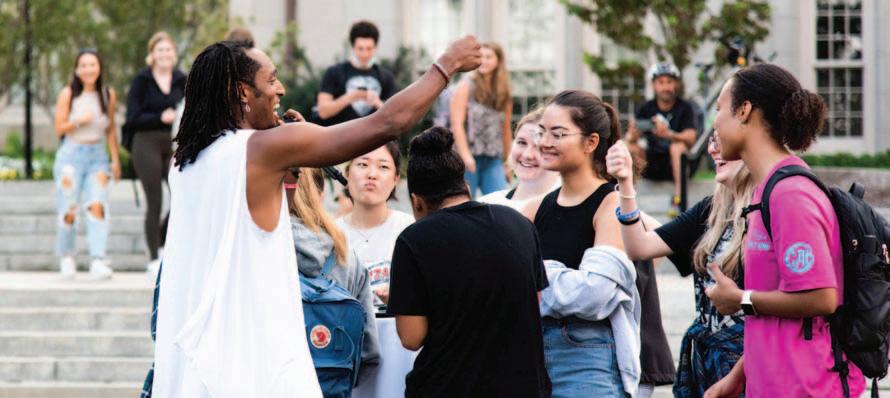
Young played mostly popular songs like Olivia Rodrigo’s “good 4
u” to get the crowd going. He spent a lot of the show asking audience members for song recommendations, The Killers’ “Mr. Brightside” being one such recommendation.
He played these popular songs for the majority of the show, but Young did play some of his own musical work toward the end. His bubbly and light track “Save the Planet” had the crowd singing along, while the closing song “Creep Creep” ended the night on a high note.
Young also paused between songs to talk about his Battery Tour, a nonprofit series of concerts entirely sustainably powered. Boston College was stop number seven on the tour which has future performances in Rome and Glasgow.
Several of those shows are opening for figures as big as Paul McCartney and Barack Obama. Young said that he was especially excited to head out to New York after this show.
Young’s upcoming Project 17 is an album collaborating with the United Nations.
In a video explaining the concept behind the album, Young said that he was attempting to make “theme songs” for the 17 Sustainable Development Goals for 2030 set by the United Nations.
There is currently no word on a release date for Project 17 , but Young’s 2021 album Hello Again is currently streaming on Spotify and Apple Music.
ARTS A6 MONDAY, SEPTEMBER 27, 2021 THE HEIGHTS
with
Train’s lead singer Pat Monahan ended his Pops set by playing the band’s Grammy-winning single “Drops of Jupiter” to a dancing and singing crowd. IKRAM ALI / HEIGHTS STAFF
NICOLE VAGRA / HEIGHTS STAFF
Rapper AY Young sings with students outside on the O’Neill Plaza, including Olivia Rodrigo’s single “good 4 u”.
A Boston College student borrows the microphone from AY Young to sing along with the crowd who gathered outside.
NICOLE VAGRA / HEIGHTS STAFF
Boston College Should Better Incorporate the Class of 2024, Implement Programming
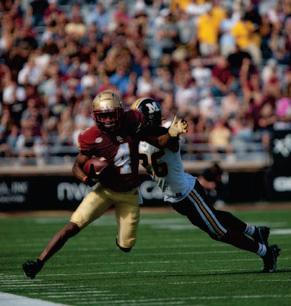


Boston College should make a concerted effort to better incorporate the Class of 2024 into the BC community. So far, BC has largely neglected the Class of 2024, whose college experience thus far has been defined by COVID-19. Both freshmen and sophomores are experiencing a normal first year at BC together, equally in awe of what a fully functioning campus looks like. The sophomore class, however, is suffering from a bad case of middle-child syndrome.
The sophomore class missed out on integral BC first-year traditions that bring together each grade to form a community between the classes. The neglect is obvious: Just take a look at the skinny Class of 2024 photo. Many sophomores did not show up because it was non-mandatory and lacked the usual Superfan 101 fanfare every other grade experienced. Compared to the Class of 2025 photo, the Class of 2024 photo is more than an embarrassing picture. It is a testament to the lack of unity within the sophomore class.
BC prides itself on its ability to welcome and connect students in a way that creates a sense of community. BC’s strong sense of community is one of its greatest strengths,

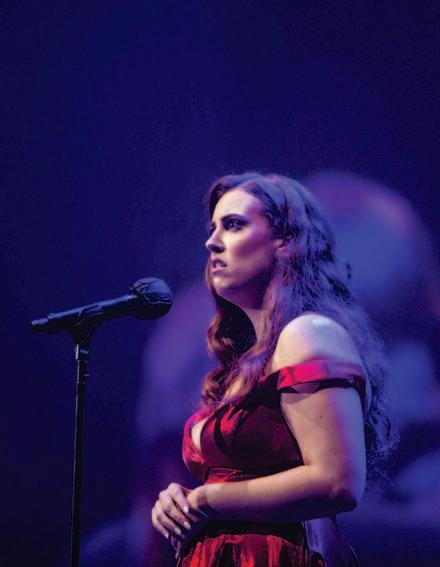
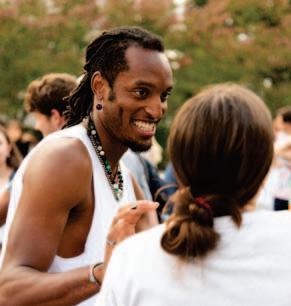

and it is essential in supporting students in realizing their full potential. The Office of First Year Experience aims to facilitate the process of community building and is “designed to help all students engage more fully with the University and challenge themselves to realize their full potential.” BC has a notably good first-year experience, which is ranked 16th in the nation by U.S. News.
In a normal year, BC does a great job of facilitating meaningful relationships among first-years and creating a campus-wide sense of community.
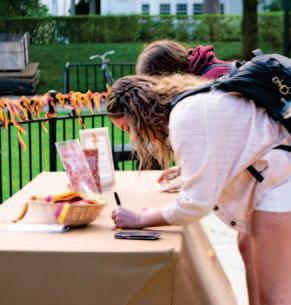
Organizations like the Office of Student Involvement, the Center for Student Formation, and the Campus Activities Board (CAB) should make an effort to bring the class of 2024 together. The sophomore social at the beginning of the year was a start, but compared to Discover Boston, CAB’s Boardwalk night, and opportunities for connection and reflection like 48Hours which are hosted exclusively for freshmen, the cocktail hour in the Rat fell short.
The result of the Class of 2024’s abnormal freshman year is a class that is struggling to fully integrate into the rest of the BC com-


munity. Some sophomores aren’t in any clubs or were in clubs that only operated online last year—and now feel like they’re a year late to the game. A gap exists between the sophomores and the other classes because the natural mentorship that would have formed through clubs and sports was not as effective in a virtual format. Moreover, there are many opportunities at BC that most sophomores have yet to discover, because they don’t even know where to look. Programs like Stride— which runs during the fall semester and “is specifically designed to help sophomores feel established at BC”—and Halftime—a retreat for sophomores and upperclassmen—are valuable, existing experiences for sophomores, and should be more effectively advertised to the sophomore class. Sophomore exclusive events like a sophomore involvement fair for mentorship programs and e-board positions would help bring the Class of 2024 together.
The Class of 2024 is an important part of the BC community, and the University should implement programming to help sophomores feel fully welcome and integrated.
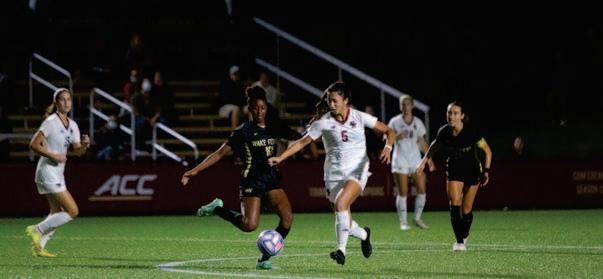
A7 MONDAY, SEPTEMBER 27, 2021 THE HEIGHTS
EDITORIAL
(LEO WANG / HEIGHTS STAFF); (NICOLE VAGRA / HEIGHTS STAFF); (MOLLY BRUNS / HEIGHTS STAFF); (STEPHEN MOONEY / FOR THE HEIGHTS); (VIKRUM SINGH / HEIGHTS EDITOR); (IKRAM ALI / HEIGHTS EDITOR).
Top photos, left to right: BC wide receiver Zay Flowers attempts to evade a tackle by Missouri defensive back Akayleb Evans, Saturday, Sept. 25; Musician AY Young performs at a concert on O’Neill Plaza, Wednesday, Sept. 22; Students write on prayer ribbons for Espresso Your Faith Week, Thursday, Sept. 23.
Bottom photos, left to right: BC midfielder Sonia Walk and Wake Forest midfielder Malaika Meena chase after the ball, Thursday, Sept. 23; BC began observing Hispanic Heritage Month with a series of performances in Gasson Hall, Tuesday, Sept. 21; Student performer Grace Collins sang while accompanied by the Boston Pops at Pops on the Heights, Friday, Sept. 24; Train performed during Pops on the Heights, singing hits “Hey, Soul Sister” and “Drops of Jupiter (Tell Me),” Friday, Sept. 24.
PINIONS
The opinions and commentaries of the op-ed columnists appearing on this page represent the views
All That Glitters Isn’t Maroon and Gold: Waste at Athletic Events
coaching staff with a so-far undefeated season has reinvigorated the BC football atmosphere. So, what’s the catch?
Trash.
Ah yes, the return of Boston College football, or rather, the return of fans to BC football. The early Saturdays and tailgate atmosphere were dearly missed last season by current students, alumni, and parents. Of course, missed most was the crux of game day: actually being in the stadium. As BC’s Athletics Director Pat Kraft told the Chicago Tribune in January, “good times are coming,” with “full stadiums,” and “campus being abuzz” for games. Kraft’s words rang true during BC’s first football game of the season, as it seemed almost everyone attended either the tailgate, the game, or both. With the return of fans to Alumni Stadium, however, comes the return of thousands of pounds of waste production.
Many would describe the return to games as a sort of homecoming. Others, however, feel the anxiety of having thousands of people in the same place. For reference, BC recorded an average of 34,185 people in Alumni Stadium per game in 2019, and I would not be surprised if attendance was up considering a number of factors this season for the Eagles. One of those factors is the team itself. This is the first year that students can see Coach Hafley’s work in person. Add this on to the fact that students are much more eager to attend games post-pandemic. In the normal college experience, it was common to miss a few games, but now, after the 2020 fanless season, students will be making every effort to see home games.
High attendance at football games increases campus unity and is profitable for BC. A new

I mean, think about it. In comparison to last year, how much more waste are you making being at a football game than not being there? What about all the tailgates and the items that go into just one tailgate? Think about all of the concession stands selling not only beverages and food but also napkins and food containers. And, think about all the concessions that are not sold—what happens to those items?
This question of waste is not unique to just football in Alumni Stadium, though. Conte Forum hosts men’s and women’s basketball and hockey games, all of which bring in sizable crowds. To figure out the amount of waste produced at athletic events, three students in the environmental studies department performed a waste audit of Conte Forum in 2016.
They found that at a typical sporting event at Conte Forum, which can hold 8,606 fans, .0525 pounds of waste were produced per person. This waste ends up in a landfill, emitting greenhouse gases. This means that the total measured food waste at Conte Forum during the 2015-16 season created 2.388 tons of greenhouse gas emissions.
I’m not telling you not to go to games, or even to not purchase anything at games. But rather, I’m trying to emphasize that there are things we can do on a community level to ensure we are minimizing the amount of waste—and eventually greenhouse gas emissions—produced at those games.
The Philadelphia Eagles’ Lincoln Financial Field established their Go Green program in 2003 to create an environmentally friendly stadium, diverting 99 percent of stadium waste from landfills and operating on 100 percent clean energy.
Stadium sustainability is not just confined
to the professional level. The University of Colorado Boulder’s Folsom Field proves stadium sustainability is attainable at the collegiate level. In 2008, Boulder started working toward its goal of a zero waste stadium. Since then, its annual diversion rates—measuring waste not dumped in landfills—have been consistently higher than 50 percent.
Compare the aforementioned waste diversion figures to those of BC, measured in 2018: 38.3 percent.
Important to decreasing our stadiums’ waste is ordering the right amount of food to start. An algorithm that would accurately predict the number of students that would attend any given game was suggested by the BC students who conducted the waste audit and would allow vendors to purchase the right amount of food, ultimately minimizing waste. BC staff currently estimates crowd attendance and orders food accordingly, but an annually updated, sport-specific algorithm could decrease the margin of error and therefore decrease the total amount of waste.
As always, as individuals, we can do more to purchase less and waste less in the process. As for our athletic stadiums, looking into more sustainable waste management and prevention would be not only economically beneficial but also put BC’s stadiums among the few college stadiums that are doing the same.
It is only right that BC’s athletic facilities reflect the same values held on campus toward the environment, those being sustainable energy practices, waste management, and environmental consciousness. In the meantime, let’s keep up BC’s winning football record, sing “Mr. Brightside” as loud as we can in the stands, and recycle our cans on the way in.
Alli Hargrove is an op-ed columnist for The Heights. She can be reached at allison.hargrove@bc.edu.
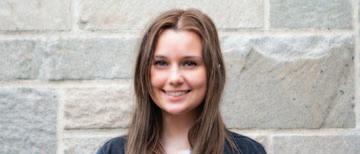
BENCH
Amazon Hub Lockers are yet another begrudging testament to Amazon’s genius, and will most likely be featured as the next case study in the Digital Technologies: Strategies and Use course (for any freshmen in the Carroll School of Management looking for current events ideas). Whether it’s an emergency purchase of Advil, a binder that was barely mentioned in the syllabus, or a tapestry of Gibby from iCarly holding a banana, the Amazon BENCH in 90 St. Thomas More Road delivers it all without the mailroom wait.
Ice Cream at Addie’s
Addie’s is arguably the most overlooked and underappreciated dining hall. An outlier in the BC Dining line-up, Addie’s offers consistency in a world of Steak Diane and lobster night. The star of the show at Addie’s, however, is the ice cream. Nothing soothes a long day or a throat tickle like fresh-scooped ice cream. For those looking to avoid the wait, walk, and prices at White Mountain, just head upstairs to Lower’s best-kept secret.
Oops, looks like I am going to get canceled for what I am about to say. I am not sorry, though. I know many of us think it, but few are brave enough to say it: Cancel culture has done more harm to our society than good. Sure, it has been a good short-term means to hold people accountable, but the long-term generational effects that it has caused are almost irreversible.
“Noooo, cancel culture holds people accountable,” you are probably thinking. Yes, I would be ignorant to say that cancel culture has failed in holding people accountable, in silencing them, and in “giving them what they deserve.” But, the means in which it holds people accountable are wrong. The way that we approach the end goal is wrong. Now, I can get into a whole philosophical debate about how the end justifies the means, but, in this case, the tremendous effect that the means have




had on our generation and will have on future generations makes cancel culture detrimental.
Cancel culture has hurt our curiosity, our willingness to question, and the opportunity to be educated by creating an environment in which asking a “stupid” or “problematic” question is grounds to be canceled. Never mind that we are actually doing this at the cost of further educating ourselves. If I had nickel for every single time I refrained from asking a question in class in order to avoid being canceled, I would qualify for the “tax the rich” dress that AOC paraded the Met Gala wearing. Oh, did I offend you? What I’m saying is I would be a prominent member of the upper class if I had a nickel for every time I silenced myself out of fear of being shunned.
At first, it was not obvious that cancel culture had infiltrated our everyday lives. I believed—as I’m sure many of you did—that cancel culture only existed in the worlds of pop culture, social media, Hollywood, and among A-list celebrities. The truth is that the scope of cancel culture has seeped much further into our lives and education. Cancel culture does not just apply to Jeffree Star and the Kardashians. It plagues our campuses and our classrooms, and as much as it helps hold people accountable in the short-term, it is really

terrifying.
A number of fundamental questions remain: where do we draw the line? When is it appropriate to “cancel” someone rather than educate them? How can we identify when someone genuinely wants to be educated and does not know about a certain subject, or when they might just be another person who is unwilling to open themselves up to learn?
Cancel culture is tricky. It can be difficult to walk the fine line between actually canceling someone or recognizing that they need to be taught to do better. I’ll be honest, it is really hard to tell sometimes, especially when you feel like you have to walk around eggshells circling sensitive topics, instead of having open conversations. What I do know for sure is that cancel culture is not the way to go. “Canceling” everyone who asks a question or expresses a difference of opinion without giving them a chance to learn—especially in the academic world—is unproductive and does not resolve anything long term. I will end with one nuance to my argument, one cancelation I deem valid: cancel cancel culture.
Isabella Nassar is an op-ed columnist for The Heights. She can be reached at isabella.nassar@bc.edu.

It’s a bird, it’s a plane, it’s COVID-19? No! It’s the throat tickle! The new PlagueLite™ that’s currently sweeping across campus is a cold cough variant commonly known as the BC throat tickle. A cacophony of coughs can be heard across campus as victims scurry to the bathroom to release a 30-minute buildup of coughing. The good news is, the tickle only lingers for about three days, so, to those currently suffering: hang in there!
Walsh Hall has an odor like no other. Instantly upon walking in, residents are hit with a smell that borders on a mix of body odor, mold, Febreze, and Natty Light. With each level of Walsh, the smell takes on a new and unique scent profile that probably could be cataloged by bio majors. Slander aside, the smell is inherent to Walsh’s integrity. Plus, the Campus Activities Board could probably make a small fortune if it was able to turn Walsh’s natural musk into a Yankee Candle scent for former residents and alumni looking for a whiff of nostalgia.
O
A8 MONDAY, SEPTEMBER 27, 2021 THE HEIGHTS
Cancel Cancel Culture
ALLI HARGROVE
ISABELLA NASSAR
of the authors of those particular pieces, and not necessarily the views of The Heights
The BC Throat Tickle
The Stench in Walsh
GRAPHIC BY OLIVIA CHARBONNEAU / HEIGHTS EDITOR
A PERFECT STORM
BY ASA ACKERLY Assoc. Sports Editor


After Missouri head coach Eli Drinkwitz’s comments that the Tigers should stay away from future New England entanglements, as the program tends not to recruit players from Massachusetts, his words returned to haunt him, as a group of Eagles from the Northeast wrote the Tigers’ downfall.
First, it was tight end Joey Luchetti, a product of Lawrence Academy in Groton, Mass., who made a key grab on the Eagles’ six-minute scoring drive to put BC ahead by three with just 25 seconds to play in the fourth quarter.
Then, it was Brandon Sebastian, coming from the even less heralded football hotbed of Connecticut, who sealed the game, picking off an ill-advised deep shot from Mizzou quarterback Connor Bazelak on the Tigers’ first overtime play to give BC (4–0) a 41–34 win over SEC opponent Mizzou (2–2). Add in the success of BC’s offensive line, led by central Massachusetts product Alec Lindstrom at center, and Northeast products carried BC to its first 4–0 start since 2007.

“It was a great day for the state of Massachusetts,” Hafley said with a smile in his post-game press conference.
Alumni Stadium exploded in cheers as Sebastian fell to the ground with his arms wrapped tightly around Bazelak’s bold attempt to send the game to a second overtime, and students fled from the stands alongside Family Weekend visitors to storm the field. A near-full crowd enveloped Alumni Stadium, and students rushed the field for the first time since beating Miami in the 2018 Red Bandanna Game.
The semblance between that win over the Hurricanes and BC’s thriller over Mizzou extended even beyond the field-storming manner of victory and magnitude of the opponent.
BC fans could have been forgiven for thinking they were watching a copy of the Steve Addazio–esque offense that took down the Hurricanes and plowed its way into the middle tier of the top-25 in 2018.
With a backup-turned-starting signal caller in the backfield, the Eagles returned to the ground-and-pound era of
AJ Dillon, racking up nearly 300 yards on the ground at a sharp 5.6 yards per clip against Mizzou.
Time and time again, the Eagles lined up with the clear intent to run the ball up the gut and proceeded to do just that.
BC threw the play-action deep shots to the wayside and replaced its past offense with a similarly styled, but more efficient, steady dismantling of the Mizzou front seven.
Lindstrom and BC’s experienced O-line led the way for a career game for Pat Garwo III and the rest of BC’s running back corps.
“I almost cried after the game because I was so proud of everybody on the offensive line,” Lindstrom said.
Down 31–27 after Mizzou steadily chipped through BC’s defense to take the lead in the opening minutes of the fourth quarter, the Eagles embarked on a campaign for paydirt, draining six minutes off the clock as they marched 60 yards in 15 plays.
BC’s three-headed monster in the backfield—Garwo, Travis Levy, and Alec Sinkfield—gashed the Tigers’ line for gain after gain, culminating in Levy’s five-yard slice up the gut for the go-ahead touchdown.
Garwo bore the brunt of the workload on the day and continued to show why he has positioned himself at the top of the stable of backs, putting up 175 yards on 25 carries and two touchdowns.
The late score appeared to give the Eagles the win, but Bazelak rattled off a quick trio of completions to put Mizzou into the edge of field goal range, and kicker Harrison Mevis knocked in a 56yard boot to tie the game as time expired.
The kick was the longest of Mevis’ career and tied for the longest in the nation this season.
While the rush game pushed the Eagles into overtime, quarterback Dennis Grosel showed the highs he can get to in overtime, rolling out to his right on 2nd-and-goal and tossing a strike across his body to Flowers in the back of the endzone for a touchdown.
BY EMMA HEALY Sports Editor
Boston College football’s Week Four matchup with Missouri garnered national attention after Mizzou coach Eli Drinkwitz appeared to take a shot at the Eagles’ competition level during a press conference. In front of a nearly sold-out crowd in Chestnut Hill, BC took on its first SEC opponent at home since 1987, and it certainly lived up to the national expectations. A 56-yard Mizzou field goal sent the game to overtime, where BC receiver Zay Flowers gave BC the go-ahead score, and Brandon Sebastian sealed it with an interception in the end zone. After a back-and-forth battle for the ages, BC emerged with a 41–34 overtime win, marking its first 4–0 start since 2007. Here are five takeaways from BC’s biggest victory so far this season:

Flowers Proves He’s “Good At Overtime”
Almost exactly one year ago, Flowers danced around Pitt’s defense for the goahead touchdown that handed the Eagles an overtime victory over Pittsburgh.
“I’m pretty good at overtime,” Flowers said after that game.
Fast forward a year, and nothing seems to have changed. Now a junior, Flowers has plenty of experience under
his belt, which puts him in the position to make clutch plays when BC coach Jeff Hafley and his team are under pressure. Starting from Mizzou’s 25-yard line in overtime, Flowers caught two passes: one, a four-yard grab to open the series, and another, a 10-yard touchdown to close it. Whether it’s a self-fulfilling prophecy, or whether Flowers is simply cool under the most high-pressure situation in college football, the third-year wideout seems to have found the secret ingredient to overtime victories.
The Garwo Show
Prior to the 2021 season, Pat Garwo III was a relative unknown. The redshirt sophomore had appeared in just 10 total games across his first two years at BC, totaling under 200 yards rushing in that span. In his first four games this season, Garwo has totaled 426 yards on the ground, good for an average of over 100 rush yards per game. After two touchdowns against Mizzou, his score total is up to four touchdowns. His first of the day came on BC’s third play of the game, as the third-year back dashed for 67 yards and a house call, breaking defenders nearly the entire way. He finished the game with a career-high 175 yards rushing, his second 100-yard game of the season. Although he contributed the majority of BC’s ground yardage, Garwo

wasn’t alone in his contributions. The Eagles have seen a steady increase in run game success throughout the season, and Dennis Grosel, Alec Sinkfield, and Travis Levy combined for another 100 rush yards against Mizzou. The Tigers gave up more rush yards to Southeast Missouri State in a blowout win for Mizzou last week, but BC’s ground game, with Garwo at the helm, is very much still on the rise.
Time Crunch
An infamous 2015 loss to Wake Forest by a final score of 3–0 is an all-too-familiar sight for BC fans. Poor clock management by former head coach Steve Addazio was the Eagles’ downfall not just in that loss six years ago, but it became a pattern over Addazio’s tenure. That pattern, however, appears to be a thing of the past with Hafley and offensive coordinator Frank Cignetti Jr. running the show. The first quarter for BC consisted of short, efficient drives, including a two-minute, four-play, 98-yard scoring drive on the Eagles’ second possession of the game.
When the fourth quarter rolled around, though, and the minutes began to wane, Hafley and Cignetti really began to flex their clock-managing muscles.

SPORTS A9 MONDAY, SEPTEMBER 27, 2021 THE HEIGHTS
LEO WANG / HEIGHTS STAFF
Pat Garwo III’s career rushing day combined with clutch plays from Zay Flowers and Brandon Sebastian in overtime handed BC its first home win over an SEC team since 2007, and fans flooded the field in celebration.
Fans stormed the field in Alumni Stadium after Brandon Sebastian’s walk-off interception in overtime against Mizzou.
PHOTO COURTESY OF AP PHOTO
OF AP
PHOTO COURTESY
PHOTO
Eagles Remain Winless in ACC With Loss To Irish
BY AIDAN ABDO Heights Staff
After a hot start to the season, Boston College women’s soccer has struggled to open conference play. Coming off a loss on Thursday against Wake Forest, the Eagles looked to bounce back Sunday against Notre Dame and earn their first win in the competitive ACC.
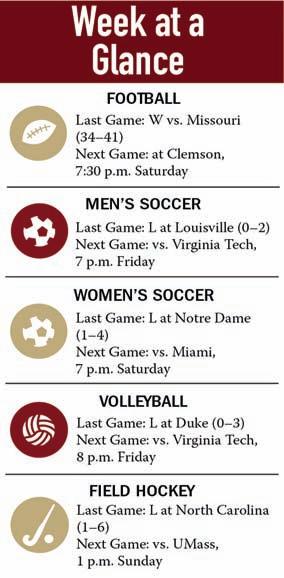
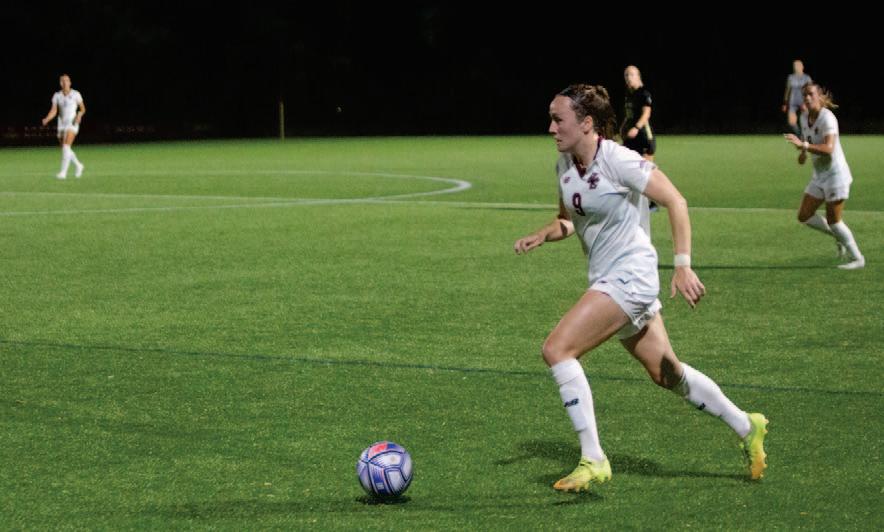
The Irish (9–1–1, 3–0–0 Atlantic Coast) have historically dominated the rivalry against the Eagles (6–4–1, 0–3–0), leading the all-time series 14–1. Notre Dame’s offense came out aggressive and put pressure on BC goalkeeper Wiebke Willebrandt from the jump and finished with a 4–1 win over BC.
Officials showed BC defenseman Haley Thomas a yellow card in the fifth minute, handing a penalty kick to Notre Dame leading scorer Sammi Fisher. She took advantage of the opportunity and fired the ball past Willebrandt to give the Irish a 1–0 lead.
Fisher and the Irish continued to attack the BC defenders throughout the first half. Fisher had two more good looks at the goal in the first half but missed just wide. Though the Irish put up 11 shots in the half, Fisher’s early tally was the only one that found the back of the net.
The Irish kept the ball in their offensive zone and controlled possession the entire half. BC did not register a single shot on goal and only recorded one total shot throughout the entire first half.
Down by one goal, BC came out of halftime with aggression, led by captain Jenna Bike. She fired two back-to-back shots to open the second half. Sam Smith also sent two shots just wide of the net, but BC suddenly had wind back in its sails.
The Eagles committed another costly penalty in the 64th minute and gave Notre Dame midfielder Maddie Mercado a penalty kick. She took advantage, firing the ball past Willebrandt to give the Irish a 2–0 lead.
The teams went back and forth for another few minutes until the Irish converted once again. Erin
Hohnstein found defender Kaylie Ronan for the goal, giving the Irish a 3–0 lead with only 20 minutes left to play.
Though all hope looked lost, the Eagles continued to fight and drew a penalty of their own in the
74th minute. Forward Linda Boama took advantage of her penalty shot as well, firing the ball past Irish goalkeeper Ashley Naylor. The goal marked Boama’s eighth of the year, making her the Eagles’ second leading scorer.
Even ahead by two, Notre Dame’s offense didn’t slow down. Fisher once again found the back of the net on an assist from Naylor, adding an insurance goal to what already looked like a runaway game for the Irish.
BY Nicole Cho Heights Staff
In his first collegiate showing, sophomore goaltender Brennan Klein recorded eight saves against No. 25 Louisville.
With four saves in each half against a ranked team, Klein kept BC in it all game long.
Despite his efforts, Boston College men’s soccer (3–4–1, 0–2–1 Atlantic Coast) fell 2–0 to the Cardinals (6–2, 3–0) on Friday night.
The Eagles struggled to maintain Louisville’s level of offense, particularly during the first half, as they relied on a narrow defense to challenge Louisville’s pressure.
Stuck in their own defensive zone, the Eagles faced a 10–0 shot deficit and eight corners throughout the
first 45 minutes. Klein’s effort and the speed of the BC defense prevented the 11th-best scoring offense in the country from capitalizing on any of its scoring chances, and the two teams entered the second half scoreless.
Louisville continued to dominate the field throughout the rest of the match, though both of its goals came in the last 15 minutes of the game. Ugochukwu Achara headed a corner inside the left post to give the Cardinals a 1–0 lead in the 77th minute, and Nico Diaz beat Klein to the net off a rebound with four minutes left in the game to ice the win for the Cardinals.
The Cardinals attempted a total of 22 shots, 10 of which were on goal, in addition to earning 12 corners. Meanwhile, BC recorded just one shot on net out of three total, and one corner. In addition to Louisville’s relentless offense, the Eagles faced 14
fouls as opposed to the Cardinals’ five. Despite the statistics, the Eagles came out visibly stronger in the second half, managing to gain more possession in their offensive zone.
Directly after Achara’s goal, officials brandished a red card against BC’s Adama Kaba for a tackle that initially was awarded a yellow, leaving the Eagles stunned and shorthanded. Even down to 10 players, the Eagles came up with more scoring chances than they had all night and displayed a valiant effort and determined mentality following the call.
Stefan Sigurdarson led the BC offense with two shots, while Michael Suski assisted his attempts in penetrating Louisville’s defense.
After tearing his ACL during the first minute of BC’s contest against Yale, Amos Shapiro-Thompson’s absence was still sorely felt among
the offense. In addition to Shapiro-Thompson, five other players are out for the season due to injuries.
Consistently facing pressure from Louisville, the BC defense showcased its strength and depth throughout the match. Junior back Victor Souza continued to dazzle, as he prevented multiple attacks by the Cardinals’ offense and controlled the field, assisting Klein at the net.
Klein recorded his first two collegiate saves back-to-back on Eric Danquah’s shots in the 28th and 30th minutes. Less than a minute after two low shots, Klein stopped a header attempt directed toward the top of the net. He continued to demonstrate his agility and awareness as he dove and jumped, catching the ball five more times to keep the Eagles within reach of a comeback against a powerful offense.
BY MARIA O’DONNELL Heights Staff
On Friday night, Boston College field hockey looked to tie its best start in program history, as the Eagles entered a top10 matchup against North Carolina. BC had been winning, and winning against ranked teams.

Still, everyone has their kryptonite. The No. 7 Tar Heels (5–3, 1–0 Atlantic Coast) may have a worse record than the No. 5 Eagles (7–2, 0–2) this year, but old habits die hard. BC has lost 15 of its last 16 matchups against North Carolina, and the Tar Heels have won their last seven games straight against BC, including a 2019 Final Four win for the Tar Heels. Despite a tremendous start to their season, the Eagles could not overcome the Tar Heels’ history of dominance and fell to UNC 6–1.
BC’s only other loss this season occurred last Friday, falling 3–1 to Syracuse. In all but one of their wins this year, the Eagles have won by only one goal, showing that despite having a winning record and top-10 national ranking, their games are usually very close.
The Tar Heels took control of the game early on, pressuring BC defenders to get rid of the ball quickly.
UNC earned a corner with six minutes remaining in the first quarter, and UNC’s Cassie Sumfest drifted away from the center spot. Sumfest was left open on the side, where she hurled the ball toward the net, allowing teammate Katie Dixon to tip the ball up in the air and past BC netminder Jonna Kennedy for the first score of the game.
The Eagles struggled to connect passes in the first quarter, as the quick Tar Heel defense was one step ahead of them. Early in the second quarter, another UNC corner forced the Eagles to be on the defensive
again. A cross-net pass by Erin Matson allowed Jasmina Smolenaars to tip the ball into the back of the net, securing a 2–0 lead for the Tar Heels.
The Tar Heels outshot the Eagles 9–2 in the first half, and BC failed to earn a single corner while the Tar Heels amassed a total of four. This uncomfortable deficit appeared to wake up the Eagles, as they suddenly began winning the free balls in the second half and adding offensive pressure.
The Tar Heels’ scoring didn’t stop there, however, as an impressive drive by Paityn Wirth brought the ball into goal-scoring territory. Wirth sent the ball to Hannah Griggs, who fired it past Kennedy’s weak side, bringing the score to 3–0. UNC notched three more in the second half, with Meredith Sholder, Matson, and Lisa Slinkert each finding the net.
BC’s offense, led by Margo Carlin, started to pick up in the fourth quarter. The Eagles earned six corners in
the second half, putting pressure on the Tar Heel defense.
Despite a six-goal deficit, the Eagles stayed in the game, focusing on short, crisp passes. Their shots on corners went just wide of the net, as their execution was strong and they left the Tar Heel defenders scrambling for a player to defend.
In the last three minutes of the
game, the Eagles once again proved why their record is so strong: they fight until the end. They earned their sixth corner of the game, where Fusine Govaert took matters into her own hands. Govaert sent a bullet into the left side of the goal, earning her fifth goal of the season and getting the Eagles on the board, but it was too little, too late.
SPORTS A10 MONDAY, SEPTEMBER 27, 2021 THE HEIGHTS
NICOLE WEI / HEIGHTS STAFF
The Eagles lost their second game of the year to No. 7 North Carolina.
The Eagles lost their third straight conference matchup against Notre Dame 4–1 on Sunday afternoon. STEVE MOONEY / HEIGHTS STAFF
College Notre Dame 1 4 Boston College North Carolina 1 6
Louisville 0 2
Boston
Boston College
Louisville Stifles
Lose 2–0 No. 7 Tar Heels Silence No. 5 Eagles
BC Offense as Eagles
in Chapel Hill
 A MY P ALMER Asst. News Editor F IONA F LANAGAN For The
A MY P ALMER Asst. News Editor F IONA F LANAGAN For The











 BY ADITYA RAO For The Heights
BY ADITYA RAO For The Heights






































